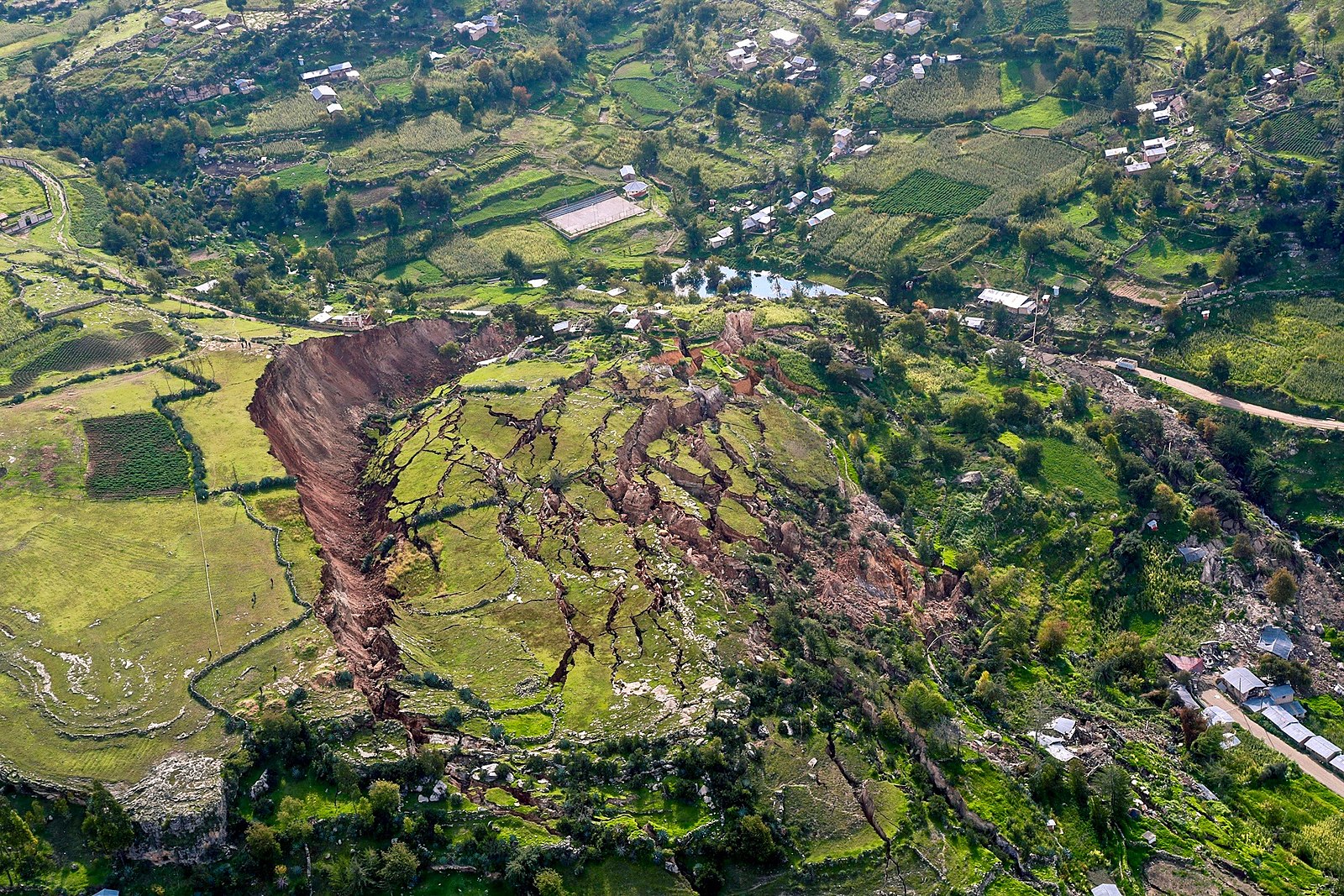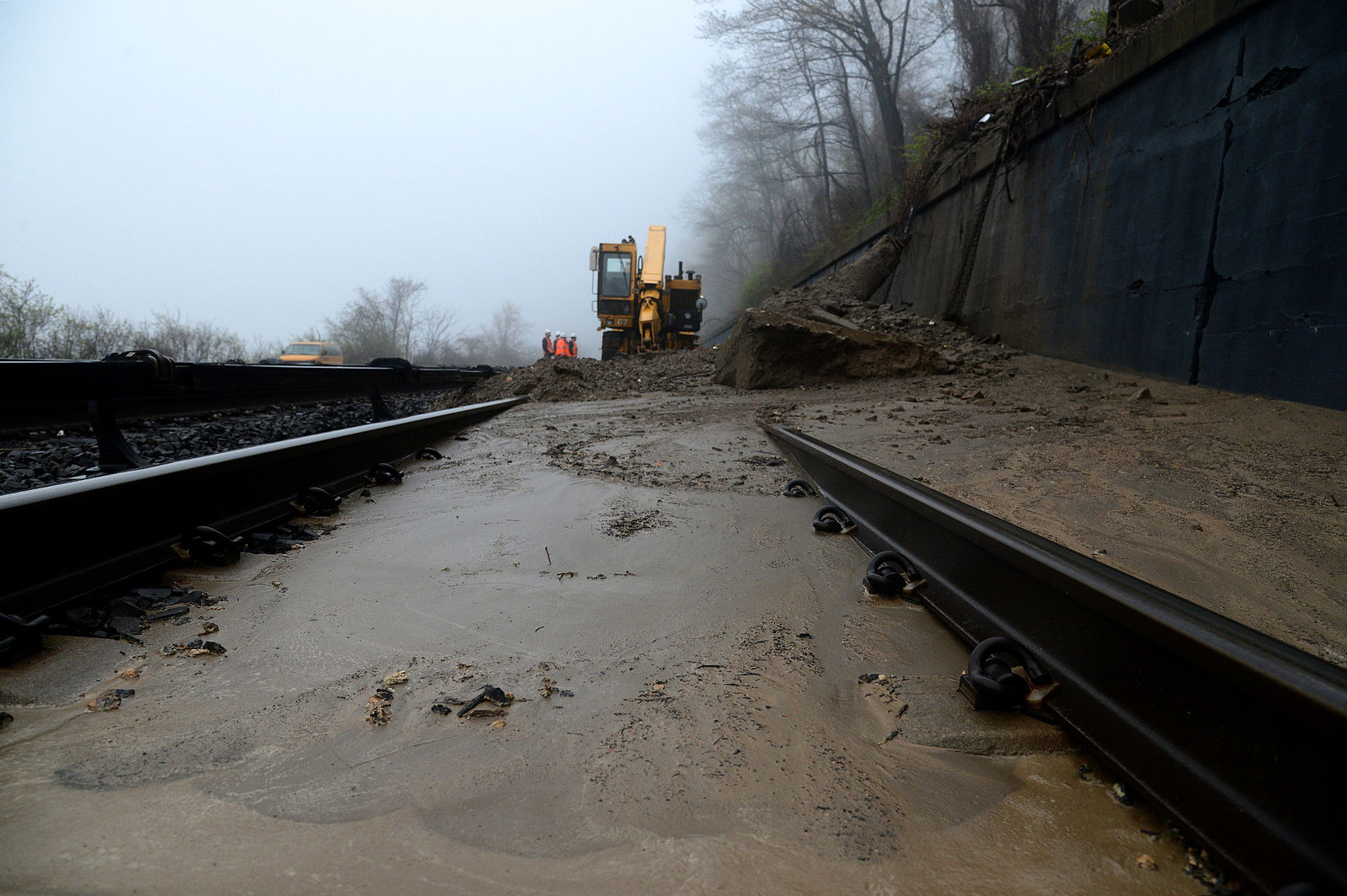Difference Between Landslide and Mudslide
• Categorized under Geography,Nature,Science | Difference Between Landslide and Mudslide
A landslide is a mass movement of soil, rocks or other debris down a slope or across the surface of the earth. A mudslide is the large-scale movement of fine particles that are partly liquefied down or along a slope.

What is Landslide?
Definition:
A landslide can be defined as a fairly large-scale movement of rocks and soil debris down a slope or sideways across the land.
Types of landslides:
Landslides can be classified in several ways depending on how they move and also what materials move. Rock falls occur when rocks fall down a slope. Lateral spreads are sideways movements of the debris of various sizes that can take place on slopes that are not as steep when compared with rockslides. The landslides may also be described as translational or rotational depending on how the material moves.
Causes of landslides:
A landslide can be caused by factors that make the slope unstable. For instance, heavy rainfall, eruptions of volcanoes and earthquakes can all cause a slope to become unstable. Stream banks and ocean cliffs are very susceptible to the effects of water impacting on the soil. The water erodes away the soil until there is no longer enough support and thus the land falls into the water, either the river or the ocean. This is more likely in the event of heavy rains or heavy seas. Human activity can also trigger landslides. For example, mines and cutting of roadways through hills can lead to debris collapsing.
Consequences of landslides:
Landslides can have a devastating impact on the natural environment but also have serious consequences for people who may lose their houses and even their lives. Falling rocks may block roads and make travel impossible.
Examples from the real world:
The floods that occurred in Kwazulu-Natal in April 2019 led to many landslides causing rocks to fall down hills, and entire houses to fall down the slopes where they were built. A very large landslide took place in 1980 when Mount St. Helens erupted.

What is Mudslide?
Definition:
A mudslide is also known as a debris-flow or mudflow and it usually involves the movement of small particles of soil that have partly or completely liquefied, down a slope or over a surface.
Types of mudslides:
Mudslides often contain a lot of clay-type soil particles, but there are also types that occur with glaciers and volcanic lava flows. Besides simple mudflows we have glacial mudslides that are called jökulhlaups and some volcanic flows that are known as lahars. Mudslides are all also considered types of landslides.
Causes of mudslides:
Heavy rainfall due to tropical storms or weather fronts is one of the main causes of mudflows. The ground becomes saturated with water and finally, the continued rainfall further loosens small particles, often resulting in mudflows in areas of the world where there are slopes with lots of clay. Unexpected thawing of glaciers and volcanic activity can cause mudslides. Human activity that removes vegetation from surfaces also increases the risk of a mudflow since there is nothing to hold the soil particles together.
Consequences of mudslides:
Because mudslides often happen very suddenly with little warning they can be very dangerous for people. People and property can become swept away and buried in mudflows. Often people are killed because they become buried in the mud from the mudflow.
Examples from the real world:
A severe mudslide happened in Venezuela in 1999 causing thousands of people to die and lose their dwellings. In 2013 the monsoon rains of India resulted in mudslides in Uttarakhand which caused at least 6000 people to die. A 2015 mudslide in Sierra Leone in Africa resulted in the death of 1000 people.
Difference between Landslide and Mudslide
Definition
A landslide is a large movement of the material of varying particle size down a slope or sideways along the landscape. A mudslide is a mass movement of small particles that are partly liquefied.
Particles involved
Landslides include the movement of any particle size from large boulders to fine soils. Mudslides only concern the movement of fine particles the size of clay.
Water present in the flow
Landslides do not always involve a lot of water being present. Mudslides always include a lot of water mixed with the soil that is moving.
Flows in channels
Landslides do not always involve the movement of material in a set channel. Mudslides often do have the movement of soil in a specific channel.
Speed of movement
A landslide can happen quite slowly or quite quickly. A mudslide is almost always a quick process that happens suddenly.
Types
Types of landslides include lateral spread, rock fall, mudslide, rotational, and translational forms. Types of mudslides include mudflow, lahar, and jökulhlaups.
Examples
Examples of landslides include the rock falls and landslides in Kwazulu-Natal regions in 2019, and Mount St. Helens in 1980. Examples of mudslides include Venezuela in 1999, Uttarakhand in 2013, and Sierra Leone in 2015.
Table comparing Landslide and Mudslide

Summary of Landslide Vs. Mudslide
- Landslides and mudslides are both movements of land material.
- A landslide is a general term used to describe the movement of material down a slope or sideways.
- Mudslides always involve small soil particles like clay moving, and the material is always quite liquid and contains water.
- Both mudslides and landslides can be caused by inclement weather conditions such as heavy rainfall and also be made more likely to happen by human changes that are made to the landscape.
- Difference Between Rumination and Regurgitation - June 13, 2024
- Difference Between Pyelectasis and Hydronephrosis - June 4, 2024
- Difference Between Cellulitis and Erysipelas - June 1, 2024
Sharing is caring!
Search DifferenceBetween.net :
Cite
APA 7
Osborn, D. (2019, August 27). Difference Between Landslide and Mudslide. Difference Between Similar Terms and Objects. https://www.differencebetween.net/science/difference-between-landslide-and-mudslide/.
MLA 8
Osborn, Dr. Rae. "Difference Between Landslide and Mudslide." Difference Between Similar Terms and Objects, 27 August, 2019, https://www.differencebetween.net/science/difference-between-landslide-and-mudslide/.
Leave a Response
Written by : Dr. Rae Osborn. and updated on 2019, August 27
References :
[0]Image credit: https://commons.wikimedia.org/wiki/File:Metro-North_Mudslide_(13894858407).jpg
[1]Image credit: https://commons.wikimedia.org/wiki/File:Landslide_in_Cusco,_Peru_-_2018.jpg
[2]Allison, Robert J., and Denys Brunsden. "Some mudslide movement patterns." Earth Surface Processes and Landforms 15.4 (1990): 297-311.
[3]Cruden, David M., and David J. Varnes. "Landslides: investigation and mitigation. Chapter 3-Landslide types and processes." Transportation research board special report 247 (1996).
[4]United States Geological Survey. “Landslide types and processes.” USGS, U.S. Geological Survey and U.S. Department of the Interior, 2004, https://pubs.usgs.gov/fs/2004/3072/fs-2004-3072.html
See more about : Landslide, Mudslide
